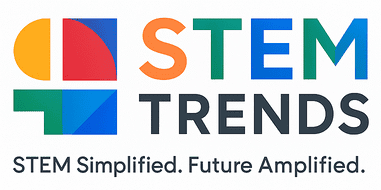Data Is the New Oil: Why Learning to Analyze It Is Crucial
By John
Every second, an unprecedented volume of data is generated in today’s digital landscape through various online activities, financial transactions, IoT devices, and social media. This phenomenon has given rise to the concept of Big Data. But what exactly is Big Data, and why is it often compared to oil — the world’s most valuable commodity once upon a time?
Answering the Big Question: What Is Big Data?
Big Data refers to extremely large and complex datasets that cannot be processed effectively by traditional information-processing applications. These datasets are characterized by the 5 Vs, summarized below(Wikipedia):
- Volume: This is the massive amounts of information generated from numerous sources.
- Value: The actual insights derived from the statistical analysis.
- Variety: Different formats of data, including structured, semi-structured, and non-structured.
- Veracity: That is, the reliability and accuracy of the stats.
- Velocity: This is the rapid speed at which information is created and processed.
According to the International Data Corporation (IDC), the global datasphere is expected to reach 175 zettabytes by 2025.
It originates from various sources, including social media platforms, sensors, smart devices, transactional systems, digital video, and many more. Oftentimes, its analysis is supported by technologies like Artificial Intelligence (AI) and Machine Learning (ML) to disclose patterns, behaviors, and predictive insights.
Big Data, the New Oil: Why?
The phrase “Data is the new oil” was first coined by Clive Humby in 2006. The comparison highlights how raw metrics, much like crude oil, must be refined and processed to become valuable.
Just as oil powered the industrial revolution, data powers the digital economy. According to McKinsey, data-driven organizations are 23 times more likely to acquire customers and six times as likely to retain them.
Refinement Is Key
Like oil must be purified into gasoline or plastic to be useful, information needs to be cleaned, organized, and analyzed to produce actionable insights. Various tools, including Hadoop, Spark, NoSQL databases, and data visualization tools, are part of the Big Data toolkit.
Fuels Multiple Industries
Healthcare: Big Data helps predict disease outbreaks and personalize medical care. Stanford Medicine estimates it could save the U.S. healthcare system over $300 billion annually.
Finance: It is used to manage credit risk and detect fraud. It is projected that Big Data could add $5 trillion in value to the banking sector by 2026.
Retail: It enhances customer personalization. Amazon’s recommendation engine — powered by Big Data — accounts for up to 35% of its revenue, according to Harvard Business Review.
Real-World Example: Amazon
Amazon collects large amounts of user behavior metrics — like clicks, purchases, search history — and uses machine learning algorithms to predict what customers want. This data-powered recommendation engine has been responsible for about 35% of Amazon’s total sales, making it one of the most successful examples of data monetization in history.
The Challenges and Considerations
Despite its benefits, Big Data introduces certain risks:
Privacy & Ethics: Laws like GDPR and CCPA aim to protect individual privacy rights.
Security: According to IBM, the average cost of an information breach hit $4.45 million in 2023.
Data Quality: The Gartner estimates that poor statistical quality costs companies $15 million annually.
Talent Gap: The World Economic Forum highlights metrics analysis as one of the most in-demand skills through 2025.
Big Data and the Future
Several trends will shape the way we use and interact with Big Data:
Edge Computing: IDC predicts that by 2025, 75% of enterprise data will be created and processed outside traditional information centers.
AI & ML Integration: A report from PwC projects that AI’s contribution to the global economy will reach about $15.7 trillion by 2030.
Democratization of Data: By 2026, 80% of organizations will launch initiatives to broaden internal access to tools and insights for information, according to Gartner’s predictions.
Final Notes
Big Data is the lifecenter of today’s economies. It is transforming industries rapidly, driving innovative solutions, and enabling smarter decisions. Yet, like crude, it must be responsibly extracted, refined, and distributed. Organizations that embrace both the power and responsibility of massive information will be the leaders of the digital age.


